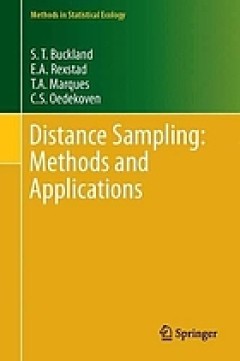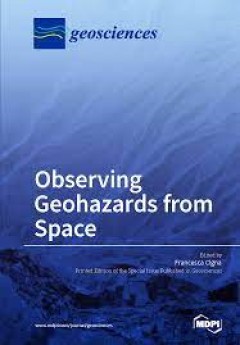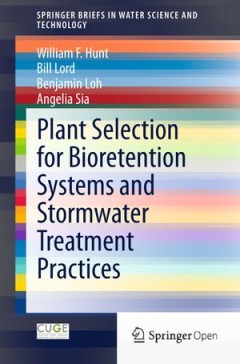Filter by

Distance sampling : methods and applications
In this book, the authors cover the basic methods and advances within distance sampling that are most valuable to practitioners and in ecology more broadly. This is the fourth book dedicated to distance sampling. In the decade since the last book published, there have been a number of new developments. The intervening years have also shown which advances are of most use. This self-contained boo…
- Edition
- -
- ISBN/ISSN
- 9783319192192
- Collation
- xv, 277 pages
- Series Title
- -
- Call Number
- 591.7

Distinguished figures in descriptive geometry and Its applications for mechan…
This book consists of chapters that focus specifically on single figures that worked on Descriptive Geometry and also in Mechanisms Sciences and contain biographical notes, a survey of their work and their achievements, together with a modern interpretation of their legacy. Since Vitruvius in ancient times, and with Brunelleschi in the Renaissance, the two disciplines began to share a common di…
- Edition
- -
- ISBN/ISSN
- 9783319201979
- Collation
- -
- Series Title
- -
- Call Number
- 519

Mineral Surface Reactions at the Nanoscale
Reactions at mineral surfaces are central to all geochemical processes. As minerals comprise the rocks of the Earth, the processes occurring at the mineral–aqueous fluid interface control the evolution of the rocks and hence the structure of the crust of the Earth during processes such as metamorphism, metasomatism, and weathering. In recent years focus has been concentrated on mineral surfac…
- Edition
- -
- ISBN/ISSN
- 978-3-03897-897-8
- Collation
- -
- Series Title
- -
- Call Number
- 551 MIN

Observing Geohazards from Space
With a wide spectrum of imaging capabilities, Earth observation offers several opportunities for the geoscience community to map and monitor natural and human-induced Earth hazards from space. The objective of this book is to collect scientific contributions on the development, validation, and implementation of satellite data, processing methods, and applications for mapping and monitoring of g…
- Edition
- -
- ISBN/ISSN
- 978-3-03842-776-6
- Collation
- -
- Series Title
- -
- Call Number
- 551 OBS

Plant Selection for Bioretention Systems and Stormwater Treatment Practices
As cities develop, more land is converted into impervious surfaces, which do not allow water to infiltrate. Careful urban planning is needed to ensure that the hydrologic cycle and water quality of the catchment areas are not affected. There are techniques that can attenuate peak flow during rain events and reduce the amount of metals, nutrients, and bacteria that enter the urban water cycle. T…
- Edition
- -
- ISBN/ISSN
- 978-981-287-245-6
- Collation
- VII, 59 halaman
- Series Title
- Springer Briefs in Water Science and Technology
- Call Number
- 551 HUN p

Earth Observation Open Science and Innovation
Over the past decades, rapid developments in digital and sensing technologies, such as the Cloud, Web and Internet of Things, have dramatically changed the way we live and work. The digital transformation is revolutionizing our ability to monitor our planet and transforming the way we access, process and exploit Earth Observation data from satellites. This book reviews these megatrends and t…
- Edition
- -
- ISBN/ISSN
- 978-3-319-65633-5
- Collation
- IX, 330 halaman
- Series Title
- ISSI Scientific Report Series
- Call Number
- 550 EAR

Hemangiomas and Vascular Malformations: An Atlas of Diagnosis and Treatment
Since the first edition of this book was published, much new knowledge has been gained on hemangiomas and vascular malformations. This revised and updated second edition, written by worldwide leaders in the field, fully reflects this progress. Important improvements in the treatment of hemangiomas are reviewed, including the use of beta-blockers and other medical therapies as well as advance…
- Edition
- -
- ISBN/ISSN
- 978-88-470-5672-5
- Collation
- XXIII, 485
- Series Title
- -
- Call Number
- 570 HEA

Heat Shock Proteins and Plants
Heat Shock Proteins and Plants provides the most up-to-date and concise reviews and progress on the role of heat shock proteins in plant biology, structure and function and is subdivided into chapters focused on Small Plant HSPs (Part I), Larger Plant HSPs (Part II) and HSPs for Therapeutic Gain (Part III). This book is written by eminent leaders and experts from around the world and is an impo…
- Edition
- -
- ISBN/ISSN
- 978-3-319-46339-1
- Collation
- VIII, 344
- Series Title
- -
- Call Number
- 570

Agricultural and Forestry Reconstruction After the Great East Japan Earthquak…
This book summarizes the results of 3 years of agricultural and forestry reconstructive efforts and applied research conducted directly in the affected areas of Fukushima following the Great East Japan Earthquake. It describes fast and effective revival methods and technologies from tsunami and radiation damages, demonstrated through the collaborative efforts of researchers, students, local far…
- Edition
- Ed. 1
- ISBN/ISSN
- 978-4-431-55558-2
- Collation
- XVII, 264
- Series Title
- -
- Call Number
- 536.33 AGR a

An Introduction to Psychological Statistics
We are constantly bombarded by information, and finding a way to filter that information in an objective way is crucial to surviving this onslaught with your sanity intact. This is what statistics, and logic we use in it, enables us to do. Through the lens of statistics, we learn to find the signal hidden in the noise when it is there and to know when an apparent trend or pattern is really just…
- Edition
- -
- ISBN/ISSN
- -
- Collation
- -
- Series Title
- -
- Call Number
- 510 FOS i
 Computer Science, Information & General Works
Computer Science, Information & General Works  Philosophy & Psychology
Philosophy & Psychology  Religion
Religion  Social Sciences
Social Sciences  Language
Language  Pure Science
Pure Science  Applied Sciences
Applied Sciences  Art & Recreation
Art & Recreation  Literature
Literature  History & Geography
History & Geography